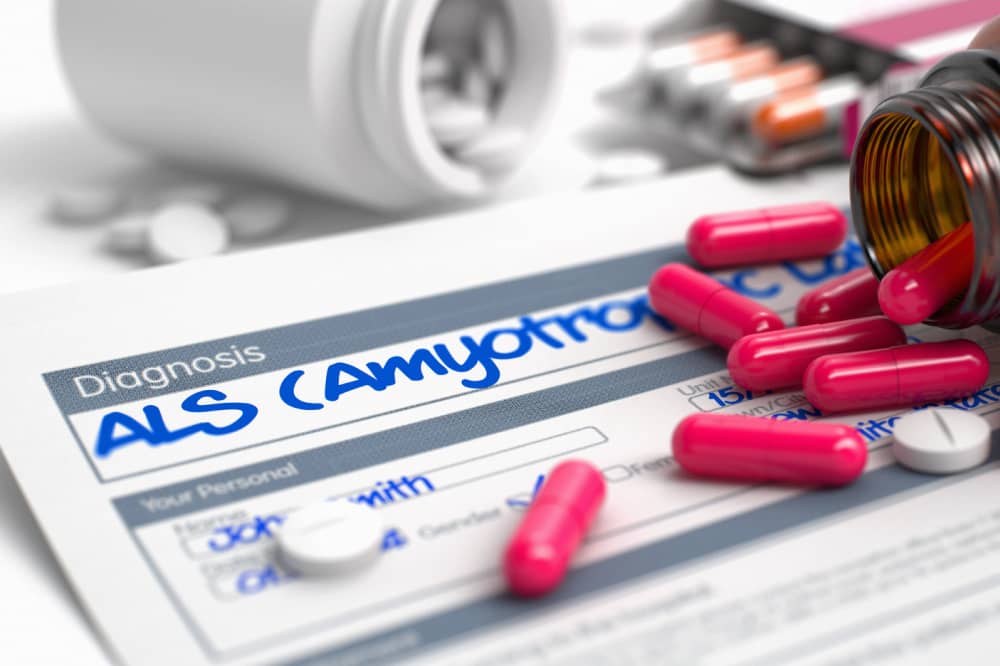
Amyotrophic lateral sclerosis – Symptoms and more
Amyotrophic lateral sclerosis is a disease that affects the nerves in the spinal cord and brain, causing gradual muscle control loss. It’s also known as Lou Gehrig’s disease. The first symptoms are muscle weakness/twitching, difficulty swallowing, and slurred speech. There is no known cure, and it impairs a person’s ability to communicate, eat, move, and breathe over time. So, here’s everything one must know about the signs and symptoms, causes, and treatment methods.
Signs and symptoms
The initial signs include limb frailty. It aggravates over the next few days or weeks. After several months (sometimes weeks), the weakness starts in another limb too. In some people, initial symptoms include trouble swallowing and slurred speech.
As the disease aggravates, signs become more apparent. The common amyotrophic lateral sclerosis symptoms include:
- Muscle twitching and cramping, particularly in the hands and feet
- Persistent fatigue
- Loss of hand and arm motor control
- Impaired use of the arms and legs
- Frequent tripping and falling
- Accidental dropping of objects
- Uncontrollable episodes of laughing or crying
- Thick or slurred speech and difficulty projecting the voice
As the condition advances, additional signs may develop. These include:
- Swallowing difficulties
- Paralysis
- Breathing difficulties
The amyotrophic lateral sclerosis symptoms may seem like other medical problems or conditions. So consult your doctor for a proper diagnosis.
Causes
A small percentage of individuals inherit amyotrophic lateral sclerosis, whereas, in maximum cases, the precise cause remains unknown. Research suggests that environmental factors and genetics are the two leading causes.
Genetics
Approximately twenty to forty percent of all ALS familial cases and a minute percentage of sporadic cases stem from the C9ORF72 gene difference. The C9ORF72 gene makes a protein in the spinal cord and the brain.
Further, twelve to twenty percent of ALS cases stem from SOD1 gene mutation, responsible for the motor neuron and other cells’ functioning. Researchers have associated mutations in the SPTLC1 gene with an uncommon type of familial ALS, impacting children as young as four. Hence, people with amyotrophic lateral sclerosis must undergo genetic testing. Family members must also get tested if the examination identifies a disease-causing variant.
Other amyotrophic lateral sclerosis causes include:
- Immune response disruption: The immune system might start harming and targeting the nerve cells.
- Chemical imbalance: ALS patients might depict elevated brain glutamate levels near motor neurons. It is toxic for the nerves.
- Protein mishandling: Incorrect protein processing by nerve cells may lead to abnormal protein accumulation, causing cell death.
Environmental factors
Studies suggest that military personnel deployed during the 1991 war in the Gulf region were more susceptible to developing amyotrophic lateral sclerosis than those deployed elsewhere. Further, experts indicate possible links between amyotrophic lateral sclerosis and:
- Electrical or mechanical injury
- Intensive physical activity
- Military service
- Elevated levels of various heavy metals
- High exposure to agricultural chemicals
But lifestyle changes can lower the probability of developing amyotrophic lateral sclerosis.
Treatment options
ALS has no known cure. However, some treatment options can lower the disease progression. Some common treatments include:
- Physical therapy for mobility
- Prescription treatments to relieve extra saliva and muscle cramps
- Speech therapy for safer communication and swallowing
- Assistive devices like grab bars, braces, splints, and reach devices to remain independent
- Special equipment like electric beds and wheelchairs for independent functionality
- Nutritional counseling when swallowing becomes challenging




